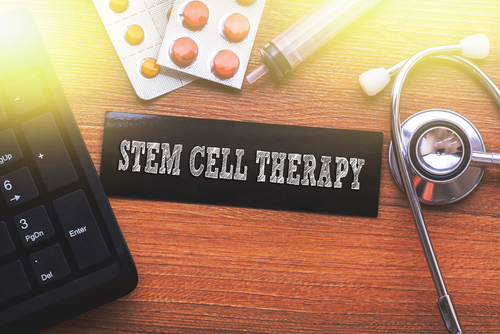Stem Cell Transplant Results Better than Standard Therapy in Severe Scleroderma Patients, Phase 2 Trial Shows

Results from a Phase 2 clinical trial shows that stem cell transplants can provide better long-term benefits than the standard treatment for patients with severe scleroderma.
Myeloablative autologous hematopoietic stem cell transplant, which uses high doses of chemotherapy and/or radiation before the patient’s own stem cells are transplanted, was found to significantly improve survival and quality of life, compared to monthly doses of the immunosuppressive drug cyclophosphamide (sold as Cytoxan, among others).
“This is a major advance in the treatment of severe scleroderma,” Karen Ballen, co-author of the study and the director of stem cell transplants at the University of Virginia Cancer Center, said in a UVA news story.
The results of the Phase 2 SCOT trial were reported in an article titled “Myeloablative Autologous Stem-Cell Transplantation for Severe Scleroderma,” published in the New England Journal of Medicine.
The SCOT study (NCT00114530) enrolled 75 patients with diagnosed severe scleroderma, of whom 97% presented lung involvement, at 26 clinical sites. Patients were randomized to undergo stem cell transplant or cyclophosphamide treatment.
Patients in the transplant group were initially treated with total-body irradiation to destroy the patient’s immune cells (myeloablation), followed by chemotherapy, then reconstitution of the immune system with stem cells previously collected from the patient’s blood.
Patients in the cyclophosphamide-only group received intravenous administration of 500 mg/m2 followed by 11 monthly infusions of 750 mg/m2 of the drug.
All participants were followed for 4.5 years to assess safety and durability of remission.
Global disease symptoms assessment revealed that 67% of the stem cell transplant patients experienced significant improvements, compared to 33% in the cyclophosphamide-treated group.
Four and a half years after receiving the treatment, 79% of the transplanted patients did not show signs of disease progression, compared to 47% in cyclophosphamide-only treated patients.
Stem cell transplant was also found to significantly increase survival of patients compared to standard therapy, with an 86% overall survival rate compared to 51% achieved with cyclophosphamide only after 72 months.
During this period of time, 9% of the patients in the transplant group required additional treatment with disease-modifying anti-rheumatic drugs (DMARDs), whereas 44% in the cyclophosphamide group needed these drugs.
Researchers reported that both treatment options carried similar risks of infection and low blood-cell counts. Four patients developed cancer, three in the transplant group and one in the cyclophosphamide group. The researchers believe the higher cancer incidence in the transplant group could be due to the myeloablative radiation therapy the patients received.
Overall, the team concluded that myeloablative autologous stem cell transplants “resulted in significantly better clinical outcomes than 12 months of cyclophosphamide. Although there was greater hematopoietic toxicity and an unquantified risk of second cancers from exposure to total-body irradiation, toxic effects should be weighed against the beneficial results of treatment.”






